How to Create an Eco-Friendly Yard & Garden on Your Homestead
Transform your outdoor space with practical tips for creating an eco-friendly yard and garden that supports wildlife, saves water, and enriches soil.
Imagine stepping into your backyard and knowing that every corner of it is working with nature, not against it. A lush, eco-friendly yard doesn’t just look beautiful—it supports local wildlife, conserves water, and builds healthier soil. Best of all, it’s easier to achieve than you might think!
In this guide, I’ll show you practical ways to transform your yard and garden into a thriving, sustainable space. From planting native species and composting to managing rainwater and reducing lawn maintenance, these simple changes can make a big impact on your homestead’s environmental footprint.
Why an Eco-Friendly Yard Matters
Our backyards are more than just outdoor spaces—they’re part of a larger ecosystem. Traditional landscaping often relies on non-native plants, chemical fertilizers, and excessive water use, which can harm local wildlife and pollute waterways. By making eco-conscious choices, you can restore balance and create a space that nurtures both your family and the environment.
Key Steps to Building an Eco-Friendly Yard & Garden
Ready to get started? Here are some practical and impactful ways you can transform your yard into a more sustainable, eco-friendly space.
Plant Native Species
Native plants are perfectly suited to your local climate and soil conditions, making them low-maintenance and naturally resilient to pests and diseases. Their deep root systems improve soil health and reduce the need for watering. More importantly, they provide critical food and shelter for native insects, birds, and pollinators, many of which rely exclusively on these plants for survival.
By planting native wildflowers, shrubs, and trees, you help rebuild the complex web of life in your own backyard—one that supports everything from bees and butterflies to songbirds and small mammals.
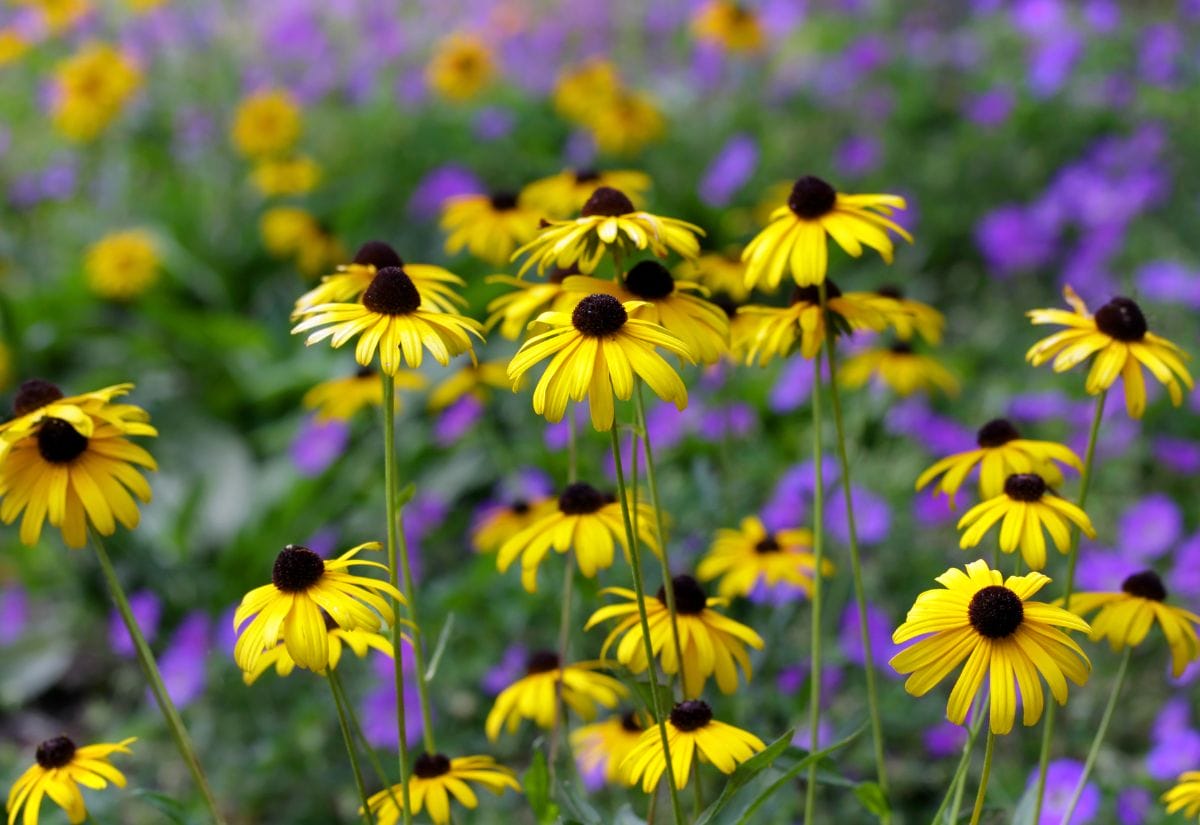
Examples of Native Plants
- Wildflowers like Black-Eyed Susan and Coneflower
- Native shrubs such as elderberry and serviceberry
- Native trees like oak, hickory, and dogwood
Want to attract more pollinators to your homestead? Transforming part of your yard into a vibrant wildflower meadow can provide essential habitat for bees and butterflies. Find out how to get started.
Tip: I started small by adding native perennials to my garden beds and was amazed at how quickly pollinators showed up!
Replace or Reduce Your Lawn
Traditional lawns require heavy watering, frequent mowing, and chemical treatments to maintain their lush, green appearance—all of which can strain natural resources and harm local ecosystems. These chemicals often wash into nearby waterways, polluting streams and rivers and endangering aquatic life. Additionally, the shallow roots of typical lawn grasses mean more water is needed, especially during dry seasons.
By reducing lawn space or transitioning to eco-friendly alternatives, you can save water, eliminate harmful chemicals, and create a more diverse and sustainable landscape. Replacing sections of your lawn with native plants, clover, or ground covers not only cuts down on maintenance but also attracts beneficial insects and supports local wildlife.

Eco-Friendly Lawn Alternatives
- Clover lawns that require less mowing and fertilizing
- Ground covers like creeping thyme or moss
- Expanding mulched areas with native plants
Tip: Letting my grass grow to at least 3 inches made it thicker and more drought-resistant without needing chemicals.
Use Mulch to Build Healthy Soil
Mulching conserves moisture, suppresses weeds, and improves soil health as it breaks down, creating a more resilient and self-sustaining garden. Organic mulches, such as wood chips, shredded leaves, and straw, not only insulate plant roots but also enrich the soil as they decompose. This process encourages beneficial organisms like earthworms and microbes, which further aerate and fertilize the soil naturally.
For best results, apply a 2-4 inch layer of mulch around your plants, keeping it a few inches away from stems to prevent rot. In addition to traditional mulches, consider using grass clippings or pine needles in areas where they complement your soil type and plant needs.
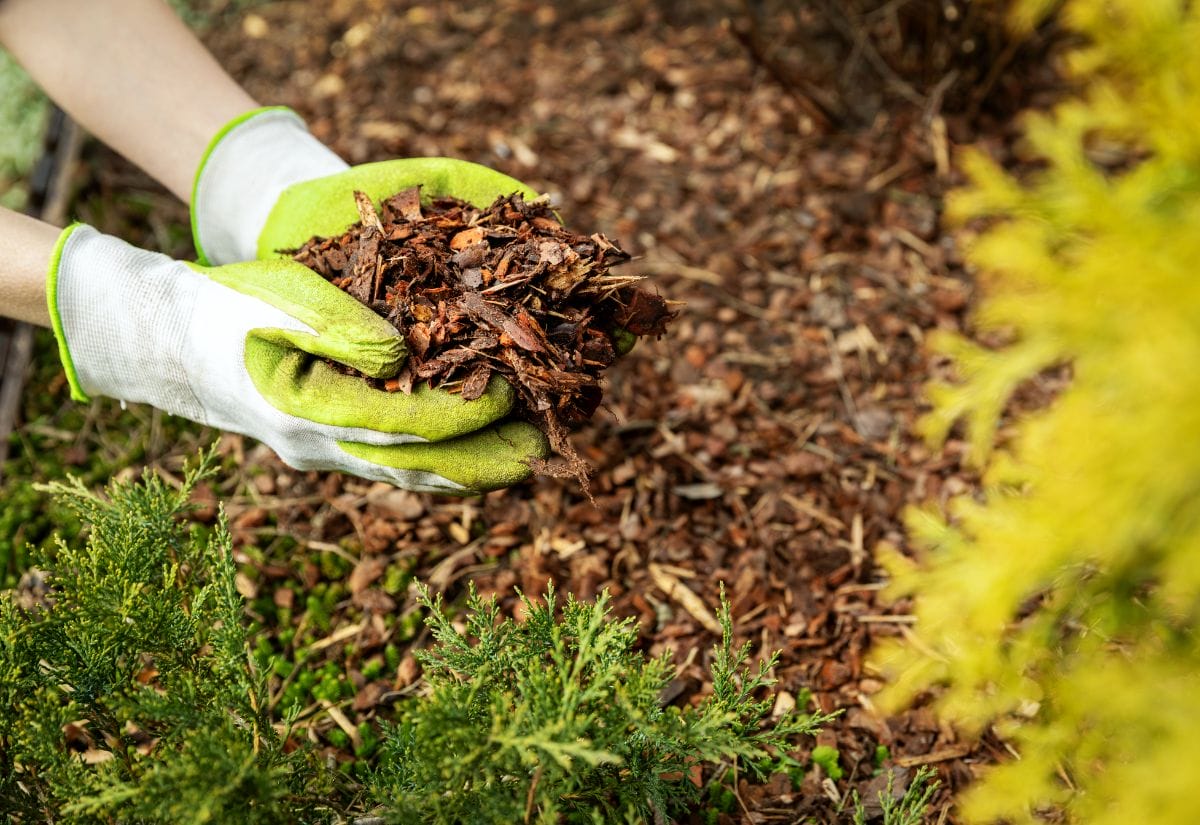
Don’t let those fall leaves go to waste! With a little patience, you can turn them into rich, crumbly soil conditioner that your garden will love. Learn how to make your own leaf mold naturally.
Tip: I get free wood chips from local tree services and layer them around my garden beds to nourish the soil and reduce watering needs.
Start Composting
Composting is one of the most effective ways to recycle organic waste and build healthy soil in your garden. By turning kitchen scraps, yard clippings, and other biodegradable materials into nutrient-rich compost, you not only reduce the amount of waste heading to landfills but also create a natural, chemical-free fertilizer for your plants.
Composting enriches the soil with essential nutrients, improves soil structure, and helps retain moisture, reducing the need for synthetic fertilizers and excessive watering. Starting a compost pile is simple—just layer greens (like fruit and vegetable scraps, coffee grounds) with browns (such as dry leaves, cardboard, and twigs), and turn the pile regularly to speed up decomposition. Over time, you’ll have rich, dark compost that can be mixed into garden beds, potted plants, and even used as top dressing for your lawn.
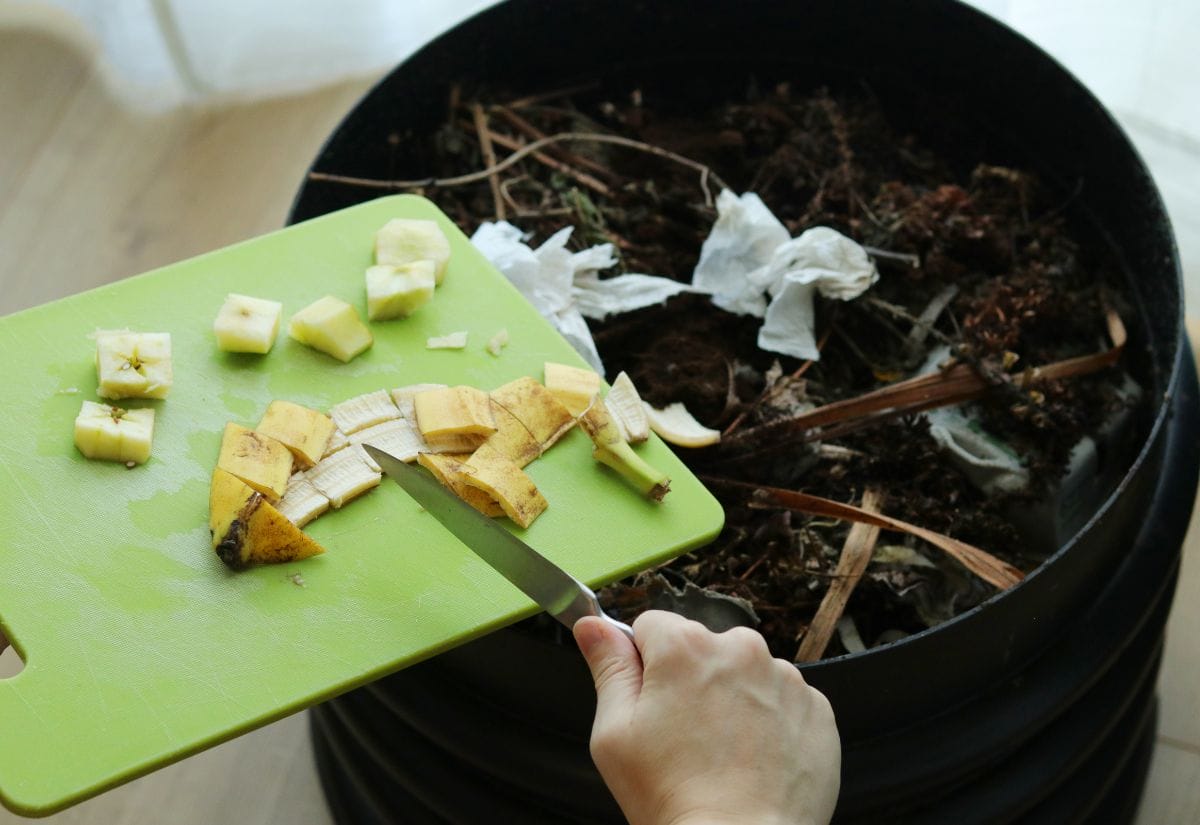
Simple Composting Steps
- Alternate layers of greens (kitchen scraps, grass clippings) and browns (leaves, cardboard)
- Turn the pile every few weeks to speed up decomposition
- Avoid adding meat, dairy, and oily foods
If you’re ready to reduce waste and feed your garden naturally, composting is the perfect place to start. It’s easier than you think! Check out this beginner-friendly composting guide.
Manage Rainwater Runoff
Capture and redirect rainwater to nourish your plants, conserve water, and prevent harmful runoff from reaching local waterways. Simple solutions like installing rain barrels can collect water from your roof to use during dry spells, while creating rain gardens or swales in low-lying areas can naturally absorb excess water and reduce erosion. Permeable surfaces, such as gravel paths or permeable pavers, allow water to soak into the ground rather than washing away, further helping to manage stormwater effectively.
These methods not only minimize pollution but also support healthier plants and soil by keeping valuable moisture on your property.
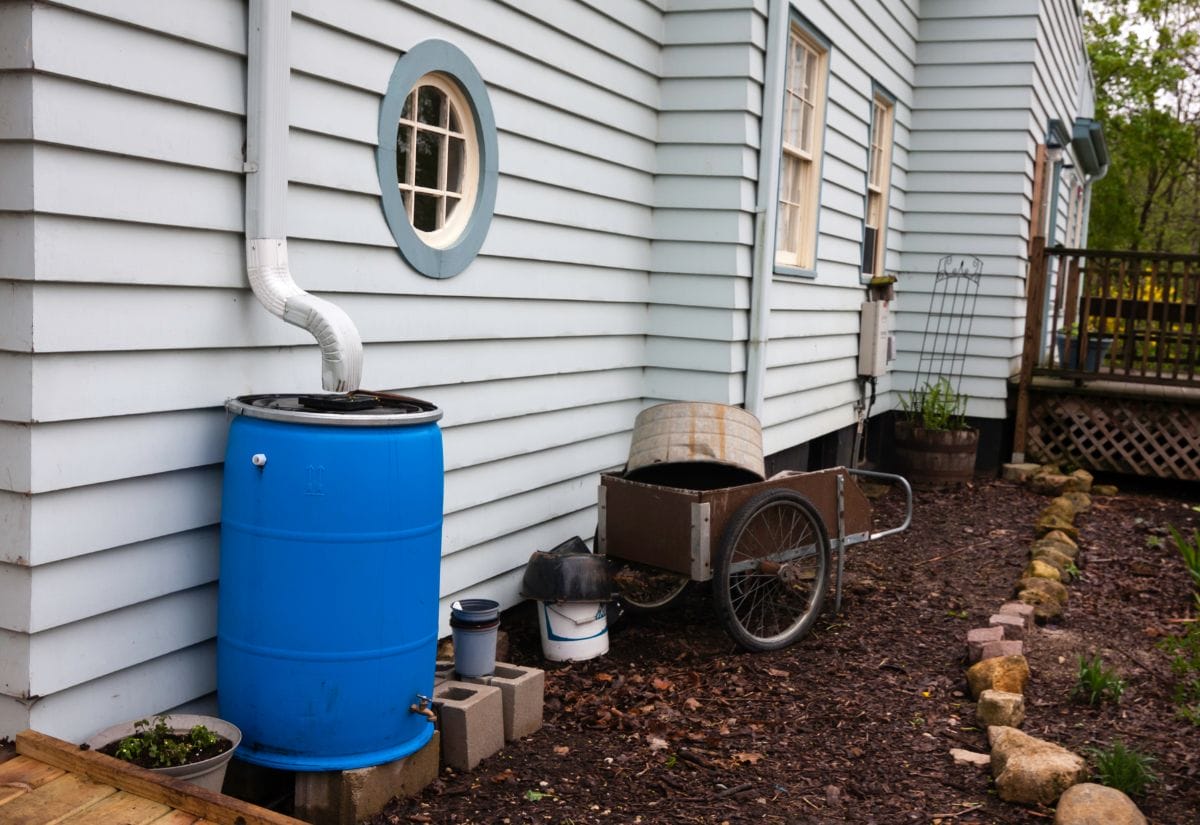
Rainwater Management Ideas
- Install rain barrels on downspouts
- Create rain gardens in low spots to absorb excess water
- Use permeable pavers or gravel driveways to reduce runoff
Looking to cut down on water use in your garden? There are plenty of simple ways to conserve water while keeping your plants healthy and thriving. Discover practical methods to make every drop count.
Tip: I use flexible drain tubes to guide rainwater into mulched garden beds, reducing the need for watering.
Repurpose and Reuse Materials
Reduce waste by creatively reusing materials you already have on hand. Old bricks, stones, and lumber can be transformed into raised garden beds, decorative borders, or rustic garden paths, giving your outdoor space a charming and functional upgrade. Broken pots can be used as drainage in plant containers, while old pallets can be repurposed into compost bins or vertical gardens. This not only saves money but also keeps usable materials out of the landfill, reducing your environmental footprint and adding a personal, handcrafted touch to your homestead.
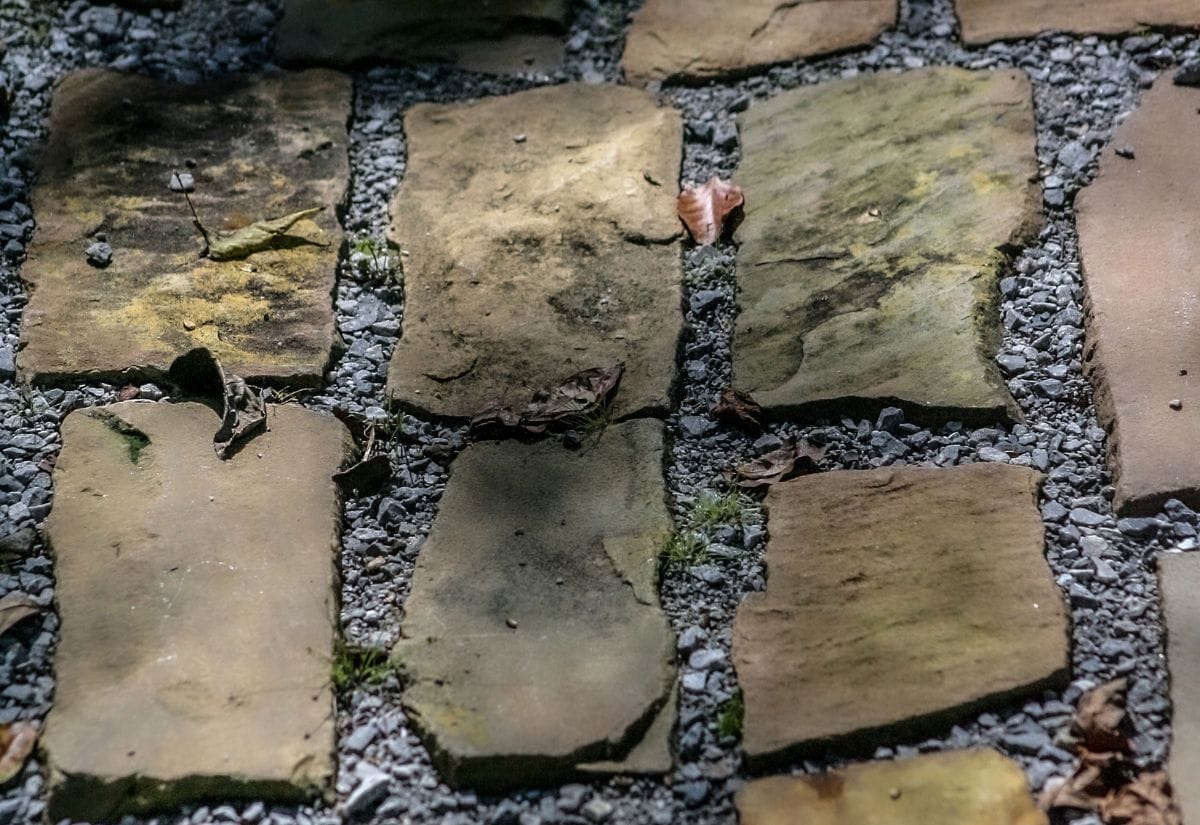
Need more space for climbing plants? You can support your garden crops without spending much using creative DIY trellis ideas. Explore budget-friendly trellis solutions.
Tip: I built a small retaining wall with leftover bricks, creating a beautiful, functional feature without spending a dime.
Your Sustainable Yard Questions Answered
One of the best decisions I made was to convert part of my lawn into a rain garden filled with native plants. Not only did it reduce runoff, but it also attracted more pollinators than ever before! If you’re not ready for big changes, start small with a compost bin or switch to organic mulching—every step counts.
Pin now, grow sustainably later! 🌼
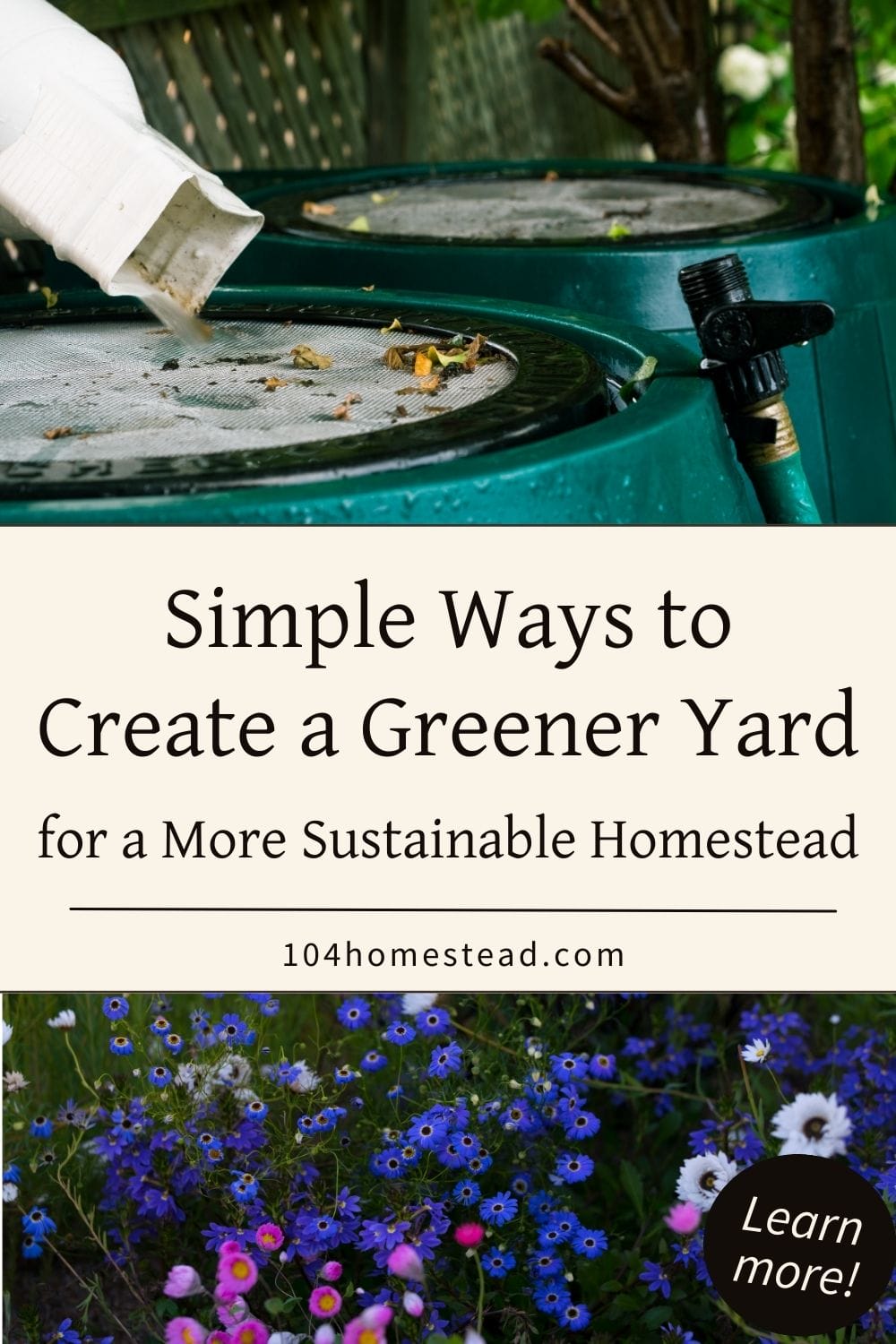
Creating an eco-friendly yard and garden isn’t about being perfect—it’s about making intentional choices that support your environment. Small changes like planting native species, composting, and managing rainwater can make a big difference over time.
What steps have you taken to make your garden more sustainable? Share your ideas and experiences in the comments below—let’s inspire each other!




We often mistakenly consider our backyards to be eco-friendly just because they are outside and the grass is growing. However “green” is much more than just a color and it implies how we use our resources, which plants we are planting, how we maintain the plants, and how we are treating the lawn. Our homes are where we impact the environment the most and that’s where we should take special care of the choices we make. Organizing and maintaining a backyard requires you to store some equipment and to keep it clean and usable. The amount of the equipment needed usually increases over time as you start experimenting with the yard. The best way to keep everything neat and clean is to install a shed such as one created by the Best Sheds http://www.bestsheds.com.au/ .